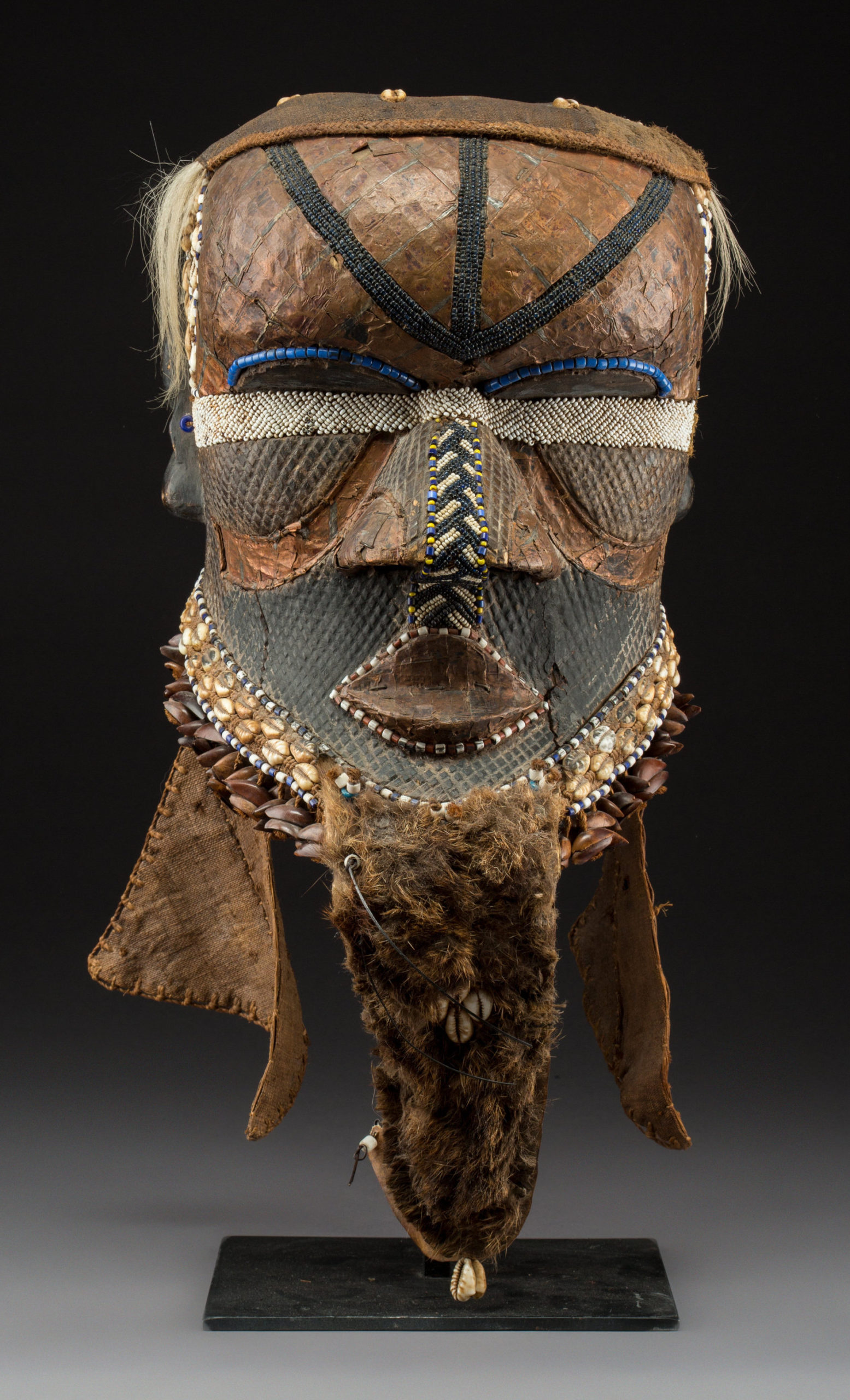This week I finally started my deep dive into the masks of Kuba masquerade. I learned about the origin of this tradition, and how it was originally started by a woman who first carved a face on a calabash. I then learned how this tradition was taken over by men, and how it is now an elusively male privilege. It reminded me of March’s deep dive on Kabuki Theatre. And I read about how a masked Kuba dancer is the manifestation of nature spirits, in particular the ngesh. This is why there are strict rules for spectators of a Kuba masquerade. They are not allowed to touch the dancers and they are not allowed to get too close.
I also read about the many different kinds of masks that are used during a Kuba masquerade. There are over 20 different types of masks that can appear during these ceremonies and initiation rites. However, the three most common are the three royal masks: Mwaash aMbooy mu shall, representing the King, Ngady mwaash, representing the King’s wife, and Bwoom, a commoner. What’s fascinating is that these three Kuba masks usually dance solo. However, when taken together, they act out the many different stories from Kuba mythology and folklore.
Interestingly, the mask that I found the most information on was Bwoom. I would have thought that the King’s mask would be the more prominent. And I’m sure it is during the masquerades. But I also read about how only the King or village chiefs can wear the Mwaash aMbooy mu shall mask, so perhaps that why information on Bwoom was more forthcoming. There’s simply more of these masks in existence. I’m guessing. I should note that I’m finding it difficult in general to find plentiful information on this topic, so I’m having to fill in the blanks quite a lot. I’m very aware that I’m probably filling them in wrong.
But back to Bwoom. Bwoom is the first spirit seen by initiates during a Kuba masquerade. Bwoom is also someone who opposes the King’s authority, often dances in defiant opposition, and acts with pride and aggression. The king, on the other hand, is always calm and steady. Bwoom masks are easy to identify, because they have common features of an enlarged head and forehead, a broad nose, and use metal work and beads to enhance the mask’s features. Bwoom masks are also made from one piece of wood, while the king’s mask is made from cloth and raffia tiles.
I hope I can find more information next week about the other three royal masks. But I also hope I can find more information about Kuba mythology in general. I keep finding references to a fascinating and rich Kuba folklore. I want to know more, but as I said. Information is proving difficult to find. I’ll do my best though. And if anyone knows any resources I should check out, please let me know.
Happy Sunday all!
Suggestions for artists I should check out? Please contact me with your ideas. I hope you enjoyed your daily helping of art!



